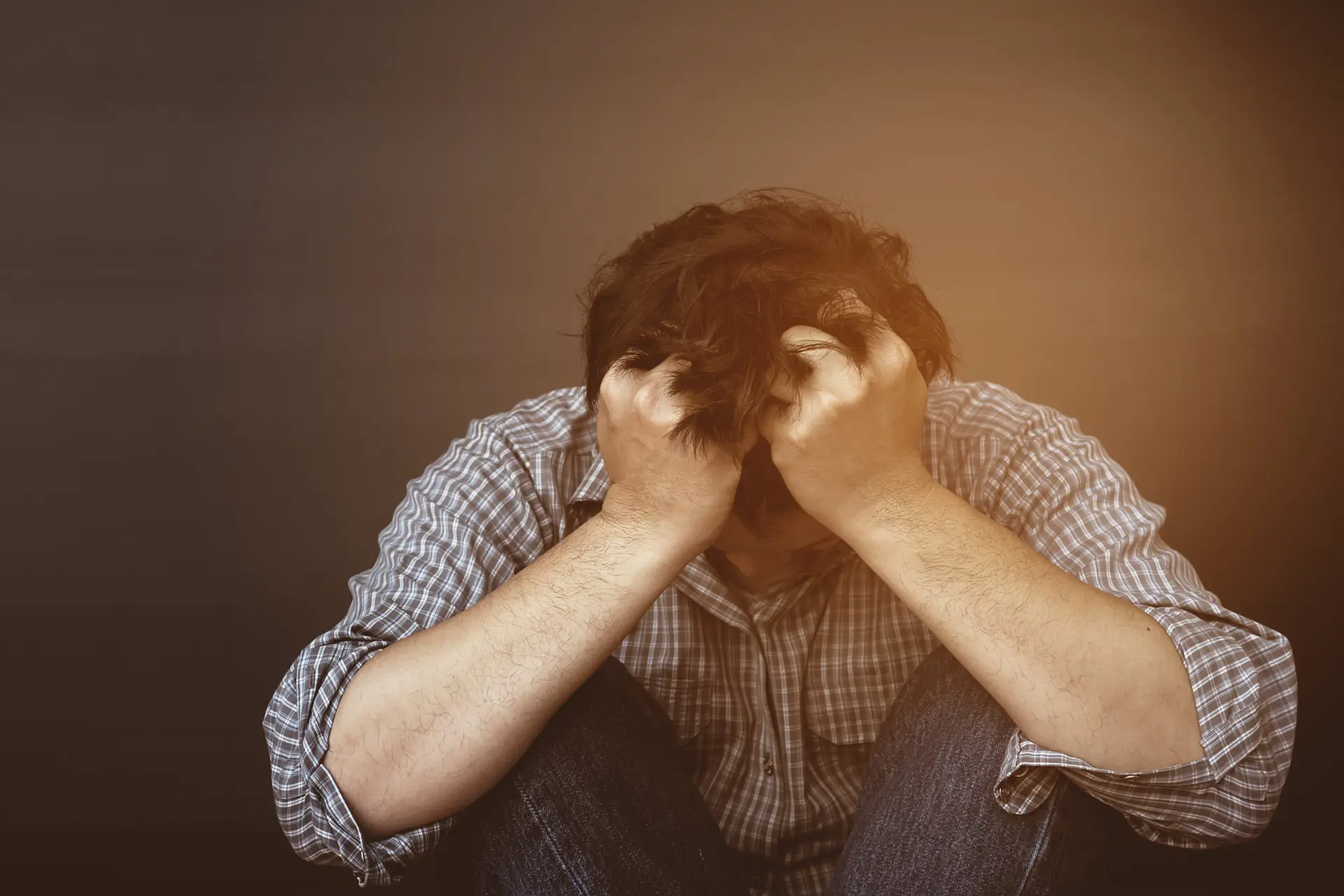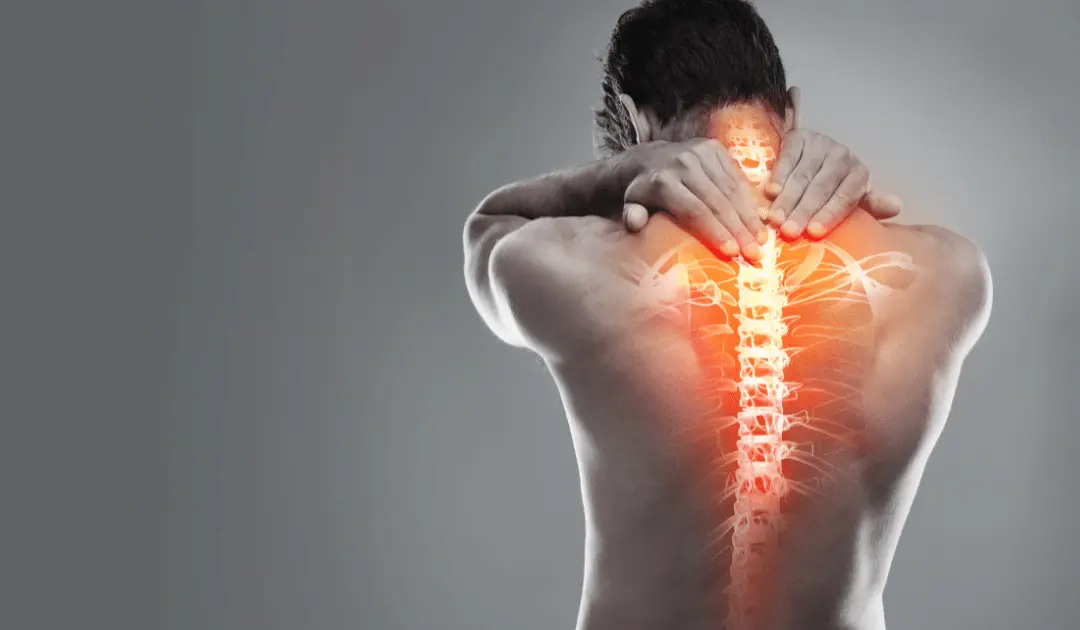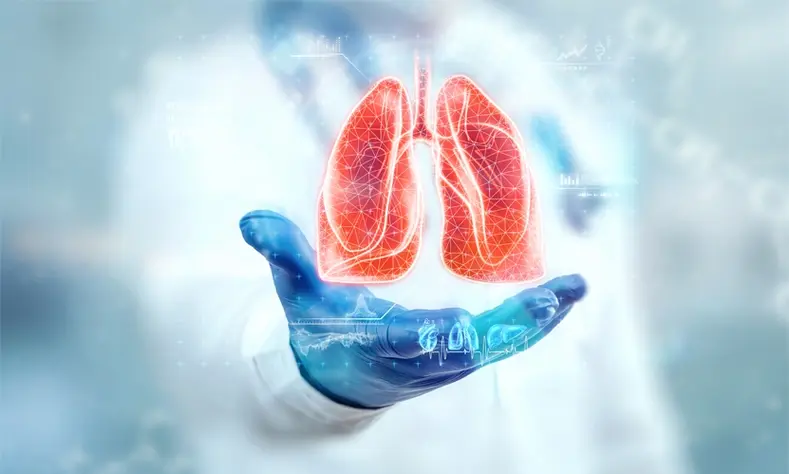Defining Anxiety: What Is It?
Anxiety is a natural response to stress, characterized by feelings of worry, apprehension, and fear. It is a part of the body’s fight-or-flight response, which is crucial for survival. However, when anxiety becomes excessive, persistent, and interferes with daily life, it may be indicative of an anxiety disorder. Anxiety disorders are among the most common mental health conditions, affecting millions of people worldwide.
Common Misconceptions About Anxiety
There are many misconceptions about anxiety. Some believe that anxiety is just a phase or that people with anxiety can “snap out of it” if they try hard enough. Others think that anxiety is a sign of weakness or that it only affects certain types of people. These misconceptions can prevent individuals from seeking the help they need and perpetuate stigma around mental health issues.
Types of Anxiety Disorders
1. Generalized Anxiety Disorder (GAD)
Generalized Anxiety Disorder (GAD) is characterized by excessive, uncontrollable worry about various aspects of daily life, such as work, health, and social interactions. People with GAD often find it difficult to control their worry and may experience physical symptoms like restlessness, fatigue, difficulty concentrating, and muscle tension.
2. Panic Disorder
Panic Disorder involves recurrent and unexpected panic attacks—sudden periods of intense fear that may include palpitations, sweating, trembling, shortness of breath, and a sense of impending doom. People with Panic Disorder often worry about when the next attack will occur, leading to significant lifestyle changes to avoid potential triggers.
3. Social Anxiety Disorder
Social Anxiety Disorder, also known as social phobia, is characterized by an intense fear of social situations in which one may be scrutinized by others. This fear can be so severe that it interferes with daily activities, such as attending school, working, or maintaining relationships. Symptoms include excessive self-consciousness, fear of embarrassment, and avoidance of social interactions.
4. Specific Phobias
Specific phobias are intense, irrational fears of specific objects or situations, such as heights, flying, or spiders. These fears can lead to avoidance behaviors that interfere with daily functioning. Unlike general anxiety, phobias are usually triggered by a specific object or situation.
5. Obsessive-Compulsive Disorder (OCD)
Obsessive-Compulsive Disorder (OCD) is characterized by intrusive, unwanted thoughts (obsessions) and repetitive behaviors or mental acts (compulsions) performed to reduce anxiety. Common obsessions include fears of contamination or harm, while common compulsions include excessive cleaning, checking, or counting.
6. Post-Traumatic Stress Disorder (PTSD)
Post-Traumatic Stress Disorder (PTSD) can develop after experiencing or witnessing a traumatic event. Symptoms include re-experiencing the trauma through flashbacks or nightmares, avoidance of reminders of the trauma, negative changes in thoughts and mood, and increased arousal and reactivity.
Causes of Anxiety
1. Biological Factors
Biological factors contributing to anxiety include genetics, brain chemistry, and physical health conditions. Research shows that anxiety disorders can run in families, suggesting a genetic predisposition. Additionally, imbalances in neurotransmitters such as serotonin, dopamine, and norepinephrine can affect mood regulation and contribute to anxiety.
2. Psychological Factors
Psychological factors include personality traits, such as perfectionism and a tendency toward negative thinking, which can increase the risk of developing anxiety. Past experiences, such as trauma or chronic stress, can also play a significant role in the development of anxiety disorders.
3. Environmental Factors
Environmental factors, such as stressful life events, can trigger or exacerbate anxiety. These events may include financial difficulties, relationship problems, or significant life changes like moving or starting a new job. Chronic exposure to stressors, such as a high-pressure work environment, can also contribute to the development of anxiety disorders.
4. Genetic Predispositions
Genetics play a significant role in the development of anxiety disorders. Studies have shown that individuals with a family history of anxiety are more likely to experience anxiety themselves. This genetic predisposition interacts with environmental and psychological factors to influence the onset and severity of anxiety.
Symptoms of Anxiety
1. Physical Symptoms
Physical symptoms of anxiety can include a racing heart, shortness of breath, sweating, trembling, dizziness, stomachaches, and headaches. These symptoms result from the body’s fight-or-flight response, which prepares the body to respond to perceived threats.
2. Emotional and Cognitive Symptoms
Emotional and cognitive symptoms of anxiety include excessive worry, fear, irritability, and difficulty concentrating. People with anxiety may also experience a sense of impending doom or feeling overwhelmed by their thoughts and emotions.
3. Behavioral Symptoms
Behavioral symptoms of anxiety can include avoidance of anxiety-provoking situations, social withdrawal, and changes in sleeping and eating patterns. These behaviors can further reinforce anxiety and interfere with daily functioning and quality of life.
Diagnosing Anxiety
When to Seek Professional Help
It’s important to seek professional help when anxiety becomes overwhelming, persistent, and interferes with daily life. Symptoms that significantly impact work, school, relationships, or physical health should not be ignored. Mental health professionals can provide a thorough assessment and develop an appropriate treatment plan.
Common Diagnostic Tools and Assessments
Mental health professionals use various tools and assessments to diagnose anxiety disorders. These may include clinical interviews, self-report questionnaires, and standardized diagnostic criteria, such as those outlined in the Diagnostic and Statistical Manual of Mental Disorders (DSM-5).
The Impact of Anxiety on Daily Life
Effects on Work and School Performance
Anxiety can significantly impact work and school performance. Individuals may struggle with concentration, productivity, and meeting deadlines. Fear of failure or criticism can also lead to avoidance behaviors, such as missing work or school days.
Impact on Relationships
Anxiety can strain relationships with family, friends, and romantic partners. Individuals with anxiety may withdraw from social interactions, become overly dependent on loved ones for reassurance, or experience irritability and mood swings that affect their relationships.
Influence on Physical Health
Chronic anxiety can have detrimental effects on physical health. It can weaken the immune system, increase the risk of cardiovascular diseases, and contribute to conditions such as irritable bowel syndrome (IBS) and chronic pain. Additionally, the physical symptoms of anxiety, such as headaches and muscle tension, can further impact overall well-being.
Coping Strategies for Anxiety
1. Mindfulness and Meditation
Mindfulness and meditation are effective techniques for managing anxiety. These practices involve focusing on the present moment and accepting thoughts and feelings without judgment. Regular mindfulness and meditation can help reduce stress, improve emotional regulation, and increase self-awareness.
2. Breathing Exercises
Breathing exercises, such as deep breathing and diaphragmatic breathing, can help calm the nervous system and reduce anxiety. These exercises involve taking slow, deep breaths to promote relaxation and reduce physical symptoms of anxiety, such as a racing heart and shallow breathing.
3. Physical Exercise and Its Benefits
Regular physical exercise is beneficial for managing anxiety. Exercise releases endorphins, which are natural mood enhancers, and helps reduce stress hormones like cortisol. Activities such as walking, running, yoga, and strength training can improve overall mental and physical health.
Therapeutic Approaches to Anxiety
1. Cognitive Behavioral Therapy (CBT)
Cognitive Behavioral Therapy (CBT) is a widely used therapeutic approach for anxiety disorders. CBT helps individuals identify and challenge negative thought patterns and develop healthier coping strategies. Through CBT, individuals learn to reframe their thinking and change their behaviors to reduce anxiety.
2. Exposure Therapy
Exposure therapy is a form of CBT that involves gradually exposing individuals to anxiety-provoking situations in a controlled manner. The goal is to reduce fear and avoidance behaviors by allowing individuals to confront their fears and learn that they can manage anxiety in these situations.
3. Acceptance and Commitment Therapy (ACT)
Acceptance and Commitment Therapy (ACT) focuses on accepting difficult emotions and thoughts rather than trying to eliminate them. ACT encourages individuals to commit to actions that align with their values, even in the presence of anxiety. This approach helps individuals build psychological flexibility and resilience.
Medication for Anxiety
Types of Medications
Medications for anxiety include selective serotonin reuptake inhibitors (SSRIs), serotonin-norepinephrine reuptake inhibitors (SNRIs), benzodiazepines, and beta-blockers. SSRIs and SNRIs are commonly prescribed for long-term management, while benzodiazepines and beta-blockers may be used for short-term relief.
Pros and Cons of Medication
Medication can be effective in reducing anxiety symptoms, but it also has potential side effects. Common side effects include drowsiness, dizziness, and gastrointestinal issues. Long-term use of certain medications, such as benzodiazepines, can lead to dependency and withdrawal symptoms. It’s important to discuss the risks and benefits of medication with a healthcare provider.
Managing Side Effects
Managing side effects of medication involves regular monitoring by a healthcare provider, adjusting dosages as needed, and exploring alternative treatments if necessary. It’s important to communicate any side effects to a healthcare provider to ensure the most effective and safe treatment plan.
Lifestyle Changes to Manage Anxiety
1. Healthy Diet and Nutrition
A healthy diet can support mental health and reduce anxiety. Consuming a balanced diet rich in fruits, vegetables, whole grains, lean proteins, and healthy fats can provide essential nutrients that support brain function. Avoiding excessive caffeine and sugar can also help stabilize mood and energy levels.
2. Sleep Hygiene
Good sleep hygiene is crucial for managing anxiety. Establishing a regular sleep routine, creating a relaxing bedtime environment, and avoiding stimulants like caffeine before bed can improve sleep quality. Adequate sleep helps regulate mood and reduces the risk of anxiety symptoms.
3. Reducing Caffeine and Alcohol
Reducing caffeine and alcohol intake can help manage anxiety. Caffeine can increase heart rate and promote feelings of nervousness, while alcohol can disrupt sleep and exacerbate anxiety symptoms. Limiting these substances can contribute to overall mental and physical well-being.
Support Systems and Resources
1. Finding a Therapist or Counselor
Finding a qualified therapist or counselor is an important step in managing anxiety. Mental health professionals can provide personalized treatment plans, including therapy, medication management, and coping strategies. It’s important to find a therapist who specializes in anxiety disorders and with whom you feel comfortable.
2. Support Groups and Online Communities
Support groups and online communities can provide valuable resources and a sense of connection for individuals with anxiety. Sharing experiences and coping strategies with others who understand can reduce feelings of isolation and provide emotional support.
3. Family and Friends: How They Can Help
Family and friends can play a crucial role in supporting individuals with anxiety. They can offer understanding, encouragement, and practical assistance. Educating loved ones about anxiety and involving them in the treatment process can enhance support and improve outcomes.
Techniques for Managing Acute Anxiety
1. Grounding Techniques
Grounding techniques help individuals manage acute anxiety by focusing on the present moment. Examples include the 5-4-3-2-1 technique, which involves naming five things you can see, four things you can touch, three things you can hear, two things you can smell, and one thing you can taste. These techniques can help redirect attention away from anxiety and promote calmness.
2. Progressive Muscle Relaxation
Progressive muscle relaxation involves tensing and then relaxing different muscle groups in the body. This technique can help reduce physical tension and promote relaxation. Practicing progressive muscle relaxation regularly can improve overall stress management.
3. Visualization and Guided Imagery
Visualization and guided imagery involve imagining a peaceful and calming scene to reduce anxiety. These techniques can help distract from anxious thoughts and promote relaxation. Guided imagery can be practiced through audio recordings or with the guidance of a therapist.
Anxiety in Children and Adolescents
1. Signs and Symptoms in Younger Populations
Anxiety can manifest differently in children and adolescents compared to adults. Common signs and symptoms include excessive worry, irritability, restlessness, difficulty concentrating, and physical complaints like stomachaches and headaches. Anxiety can also impact academic performance and social interactions.
2. Strategies for Parents and Caregivers
Parents and caregivers can support children and adolescents with anxiety by creating a safe and supportive environment. Encouraging open communication, validating their feelings, and teaching coping strategies can help. It’s also important to model healthy coping behaviors and seek professional help when necessary.
3. Seeking Professional Help for Kids
Professional help for children and adolescents with anxiety may include therapy, such as cognitive behavioral therapy (CBT), and, in some cases, medication. Early intervention is important to prevent anxiety from worsening and to support healthy development.
Anxiety and Co-occurring Disorders
1. Depression and Anxiety
Depression and anxiety often co-occur, and individuals with both conditions may experience more severe symptoms. It’s important to address both conditions in treatment, as they can exacerbate each other. Integrated treatment plans that address both depression and anxiety are most effective.
2. Substance Use and Anxiety
Substance use and anxiety are also commonly co-occurring. Individuals may use substances to self-medicate and alleviate anxiety symptoms, but this can lead to dependency and worsen anxiety in the long run. Treatment should address both anxiety and substance use disorders simultaneously.
3. Managing Multiple Diagnoses
Managing multiple diagnoses involves a comprehensive treatment plan that addresses each condition. Collaboration between mental health professionals, primary care providers, and specialists is important for effective treatment. Integrated care approaches that consider the interactions between conditions are most beneficial.
Long-Term Management and Prevention
1. Building Resilience
Building resilience involves developing the ability to cope with stress and adversity. This can be achieved through practices such as mindfulness, positive thinking, and maintaining a strong support network. Resilience can help individuals manage anxiety more effectively and reduce the impact of stressors.
2. Preventive Measures
Preventive measures for anxiety include maintaining a healthy lifestyle, practicing stress management techniques, and seeking early intervention for emerging symptoms. Regular physical activity, healthy eating, and adequate sleep can also help prevent anxiety from developing or worsening.
3. The Role of Self-Care in Managing Anxiety
Self-care is crucial for managing anxiety. This includes taking time for relaxation, engaging in hobbies and activities that bring joy, and setting boundaries to prevent burnout. Regular self-care practices can improve overall well-being and reduce anxiety.
Conclusion
Anxiety is a common and manageable condition that can significantly impact daily life. Understanding the various types of anxiety disorders, their causes, symptoms, and treatment options can empower individuals to seek help and develop effective coping strategies. By addressing anxiety through a combination of therapeutic approaches, lifestyle changes, and support systems, individuals can improve their quality of life and achieve long-term mental health and well-being.




